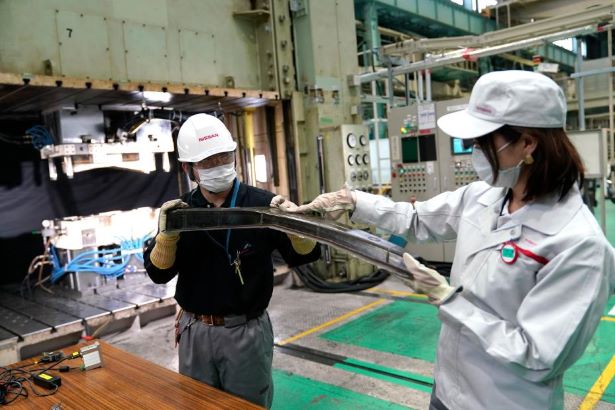
Nissan Makes A Breakthrough In Carbon Fibre Parts Production
Most vehicles are a trade-off between weight, strength and cost. The exceptions are construction vehicles and locomotives, where weight is crucial. But for the rest, if weight and strength were paramount, all vehicles would be built of carbon fibre or actually, carbon fibre reinforced plastics (CFRP) or perhaps titanium. Up to now, CFRP has been popular in building for space, aeroplanes and supercars. You know where cost is not that much of a factor. Case in point: CFRP was first used in F1 racing in 1981, by McLaren, to build their monocoque chassis.
But for the rest of us, the cost is a factor and the people who build our cars know that. That is why our cars are built out of steel and moulded plastic, with some simple, non-load bearing bits sometimes made from CFRP just for the show. And you know it’s for show because they don’t paint that part. What’s the use of having a carbon fibre diffuser if no-one can see that is what it is made from? Some even shape and texture plastic to resemble carbon fibre, matte-black bling.
But now the clever folk at Nissan have found a way to mass-produce load-bearing CFRP components at an acceptable cost. Your next Nissan may well be full of super-strong, ultra-light-weight components so cheap you don’t have to show them off to the world. But you will know they are there, because your Nissan will be stronger, safer, lighter, and boast a lower centre of gravity. It will accelerate faster, corner better and use less fuel.
The old method of making CFRP was to roughly shape the fibre part, put it into a mould with a gap between the upper die and the carbon part and inject the resin into that gap. This method required extensive and expensive tooling development, and even when you eventually got it right, it still resulted in slow manufacturing and a high part rejection rate. Expensive, in other words.
The way Nissan straightened this particular curve was to find a way to predict and shape the way the resin flows into the mould and into the carbon fibres, using temperature sensors and a transparent die. This dramatically cut the tooling development time and costs and allowed for mass production of precision moulded parts.
So Nissan solved the puzzle of more, better, faster, cheaper, giving you faster, cheaper and much better. But is that not why you have come to rely on all Nissan vehicles?

